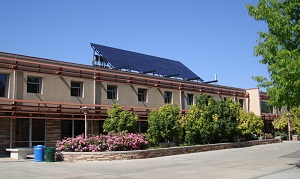Weekly solar retrospective: Top 5 solar news items from last week
 Wow, what a crazy week it was for the world of solar! It was a week full of new deals, contracts and more. Solar stocks went up on news from California. Clean Energy Authority covered a fair amount of the news, but we can’t keep up with all of it.
Wow, what a crazy week it was for the world of solar! It was a week full of new deals, contracts and more. Solar stocks went up on news from California. Clean Energy Authority covered a fair amount of the news, but we can’t keep up with all of it.
ASES kicked off it’s 15th annual national solar tour. It’s one of the largest grassroots efforts to promote solar power. This year there are more than 250 events related to the tour. Last week Clean Energy Authority reported that Wal-Mart will install 20 to 30 thin film solar arrays on store roofs in California and Arizona. In other big news, Phoenix will look to private firms to develop solar on government lands under power-purchase agreements. Sharp entered into a preliminary agreement with U.S.-based Recurrent Energy to purchase the company, which develops and operates solar systems. And DuPont significantly revised 2010 revenue guidance related to its PV products, up to $1 billion for the year.
Meanwhile we couldn’t cover these five other pieces of important PV news:
1. California’s Air Resources Board gave its approval to the state’s renewable energy portfolio.
The agency in charge of California’s air quality approved the state’s 33 percent renewables goal by 2020. While the decision doesn’t have the same authority as law does, it was an important step in making sure that the nation’s most populous state continues to move toward renewable energy. And this sent solar stocks up at some large PV companies, like First Solar, SunPower, and MEMC Electronic Materials, according to the The Street.
2. Massachusetts-based Evergreen Solar chooses new CEO.
As this company makes the transition to manufacturing panels in China, its former CEO Rick Fedlt left the company to take over a private company. Fedlt had led the company’s transition to manufacturing panels overseas. He is succeeded by Michael El-Hillow who had previously served as the company’s chairman and was its CFO, The Street reported.
3. Researchers develop artificial solar leaves.
North Carolina State University said researchers there have developed water-gel-based solar devices that can produce electricity. The devices are bendable and lead researcher Dr. Orlin Velev, Invista Professor of Chemical and Biomolecular Engineering, called the devices artificial leaves. The gel is infused with light-sensitive molecules that are coupled with electrodes like carbon materials, including graphite or nanotubes. The devices could be made cheaper than silicon-cells, according to the school.
4. Colorado State University broke ground on an PV system expansion to 5.3 MW.
The university, based in Fort Collins, Colo., is expanding an existing 2 megawatt (MW) PV array to 5.3 MW by early 2011. When completed, the array will be the largest at a higher education institution in the United States. The array will produce enough power to supply a third of the campus’ electric needs, Carol Dollard, CSU energy engineer, told The Coloradoan. The array is being built by Fotowatio Renewable Ventures under a power-purchase agreement.
5. Illuminex develops method for producing PV cells as efficient as crystalline silicon with 1 percent of silicon needed for regular PV.
Illuminex is developing a method of molecular self-assembly using nanomaterials that could drive down the cost of PV to under $0.10 per kilowatt hour. The company is using a patented anodic aluminum oxide nanowire production process to create crystalline-silicon nanowire PV materials for commercial-scale PV devices. Much of solar technology now produces power at about $0.20 per kilowatt hour.
Pictured: Solar panels sit atop an engineering building on the Colorado State University campus.



